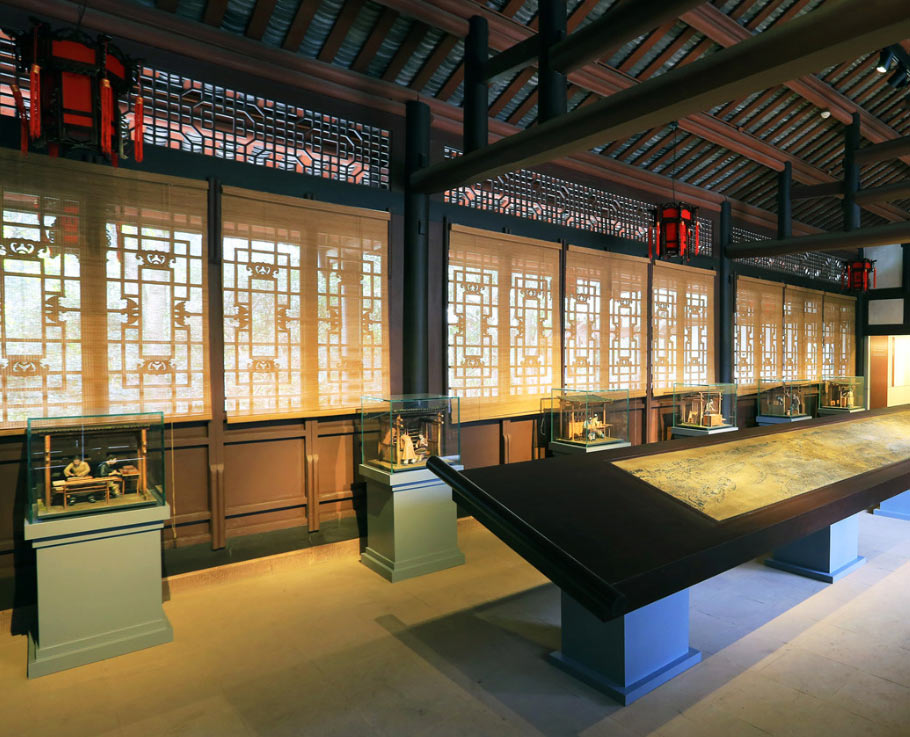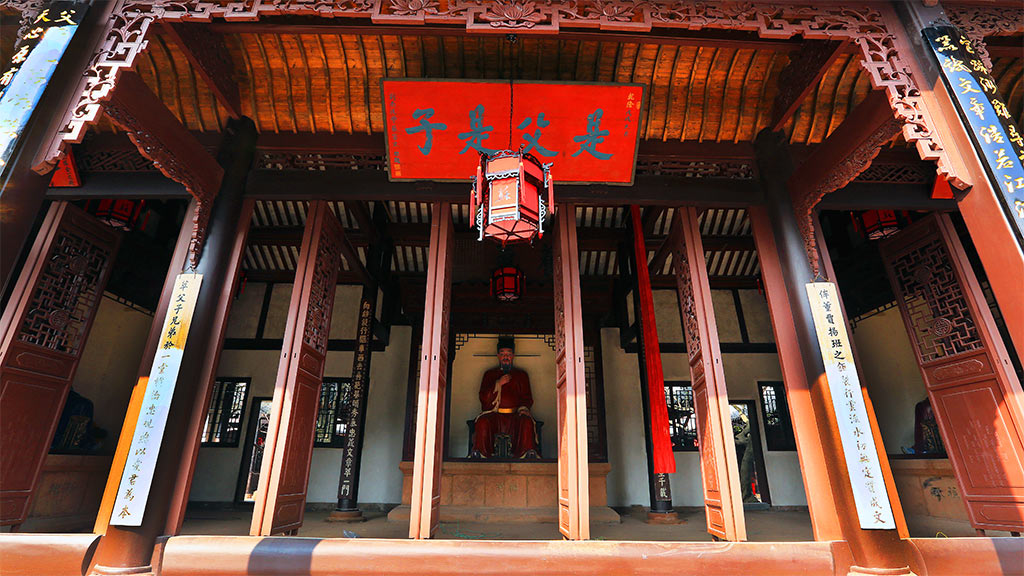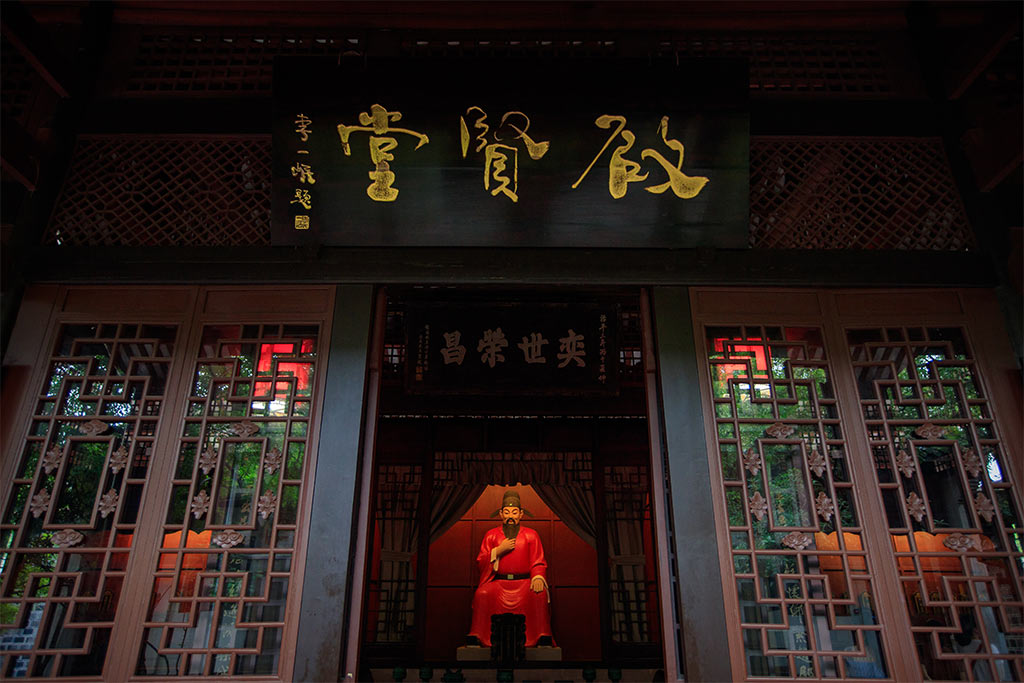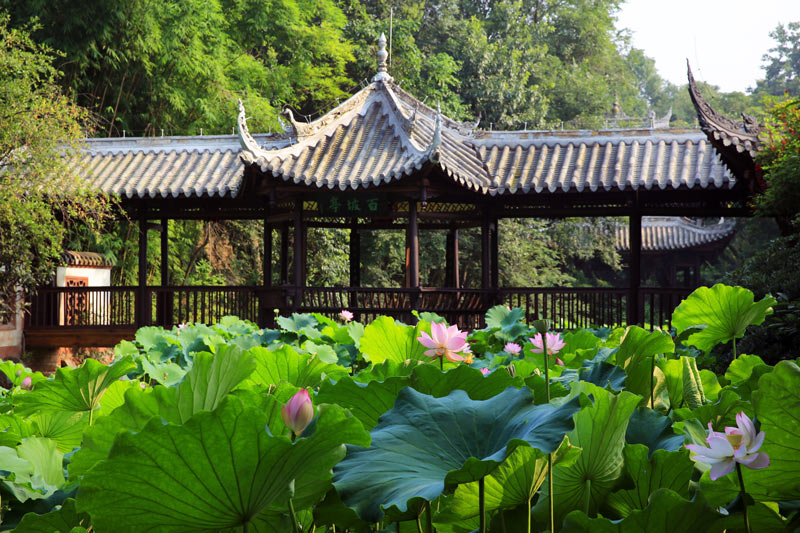As a national key cultural relics protection unit, the Ancestral Temple of the Three Sus was the former residence of three scholars in the Su family in ancient China and a famous ancient ancestral hall of Chinese celebrities. In strict accordance with the principles of ancient building conservation, and without altering the general layout and architectural appearance of the original ancestral hall, the project makes full use of its indoor and outdoor space to convey the inseparable love for Meishan, their blood ties with family members, relationships with father and brother, and their academic achievements, with the humanistic, educational and living environments as the main lines.
The exhibition focuses on the proper combination of heritage, story, and environment, integrating heritage into story and story into the environment and actualizing the natural integration between the exhibition space and architecture and gardens in the ancient ancestral hall. The front hall of the ancestral hall is the previous main entrance during the Qing Dynasty and the first door into the ancient ancestral hall. On the basis of retaining the original plaques and couplets, two imperial stone tablets made under the order of Emperor Zhao Shen in the Song Dynasty are reproduced as exhibition space to highlight the status of three Su scholars in Chinese literary history and the rich historical heritage of the ancestral Hall.
The core buildings, such as the Worship Hall and the Sage Hall located along the central axis of the whole place, have been preserved in their original function, and their interior has been arranged in strict accordance with the style of traditional Chinese ancestral halls. That is why it becomes a central place for visitors to pay homage to sages and for descendants of the Su clan to pay tribute to their ancestors. The East and West Chambers, Mujiashan Hall, and Laifeng Pavilion become the space where the story of the Su Residence is told, and when visitors enter the exhibition hall, they feel as if they have stepped into the former Su residence in Meizhou, where the story of the Su Residence is presented to visitors in the most authentic, simple and close-to-life manner.








